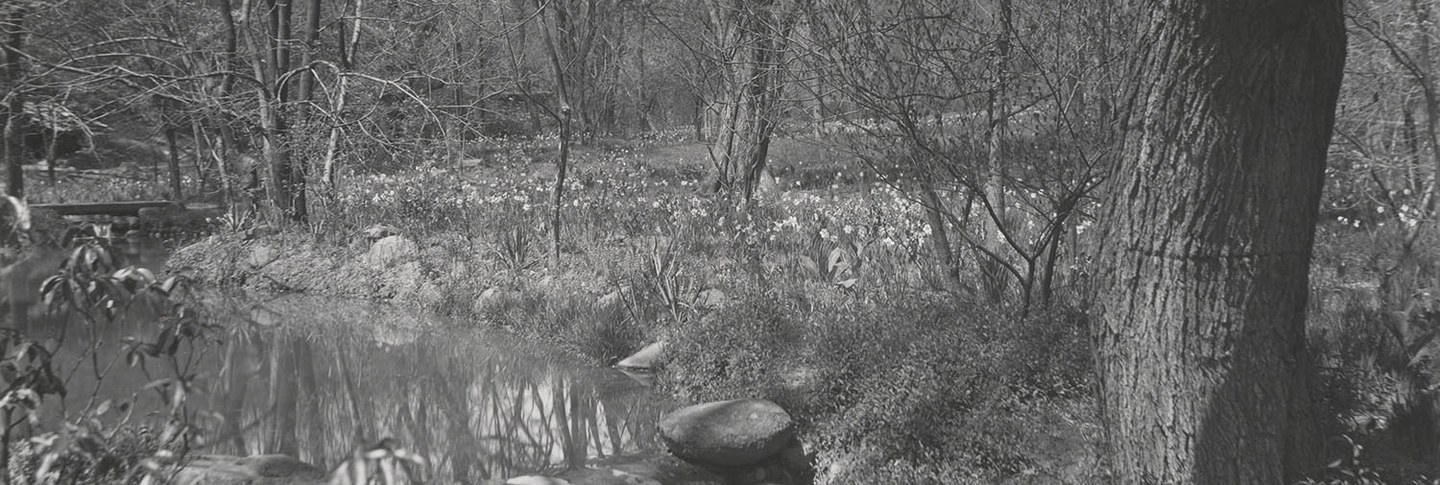This land was far from unkempt. Farrand had meticulously designed rooms within the Park, as well as a looping pathway of bridle trails that would take a visitor on a circuitous tour of the Woodland. Farrand dictated plantings along the stream and the management of tree growth to create wide open meadow spaces. With the change in management of the Park in 1940 came the challenge of maintenance outside the supervision of Dumbarton Oaks garden staff, as well as new financial considerations, with budgets being slashed through the DC Commissioners review, and changing landscape conditions for which Farrand had not planned. Increased flooding and overgrowth contributed to the deterioration of Farrand’s original designs, and only one gardener was assigned to Dumbarton Oaks Park until the 1970s, but the Park remained intact for the enjoyment of visitors and was listed on the National Register in 1967.
Today, Dumbarton Oaks Park is largely managed by the nonprofit Dumbarton Oaks Park Conservancy, established in 2010. The Conservancy has begun initiatives to revisit Farrand’s original plans, while using restoration initiatives as an opportunity to improve upon designs given a new ecological and topographical perspective over 80 years since the Blisses donated it to the public.



